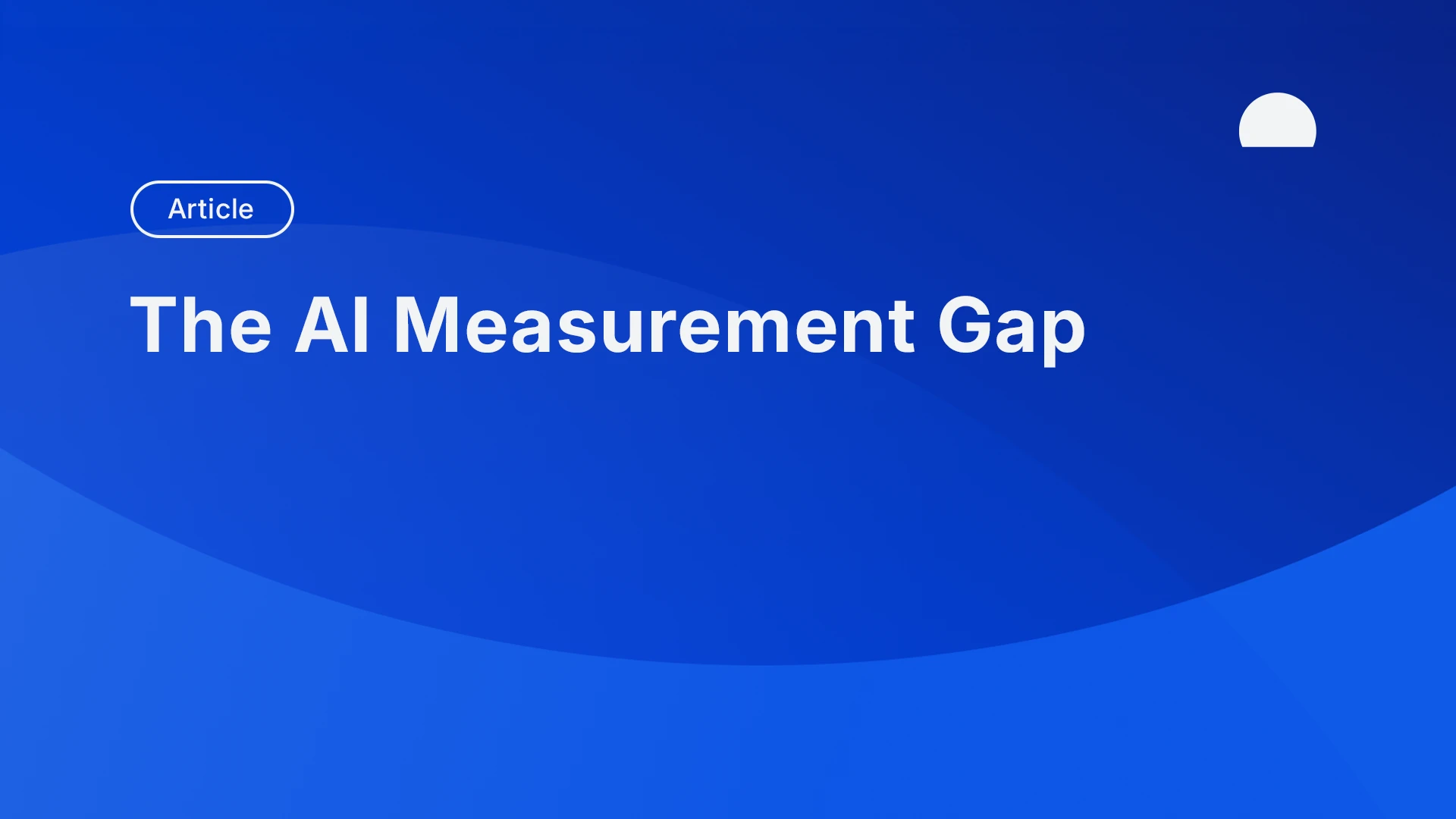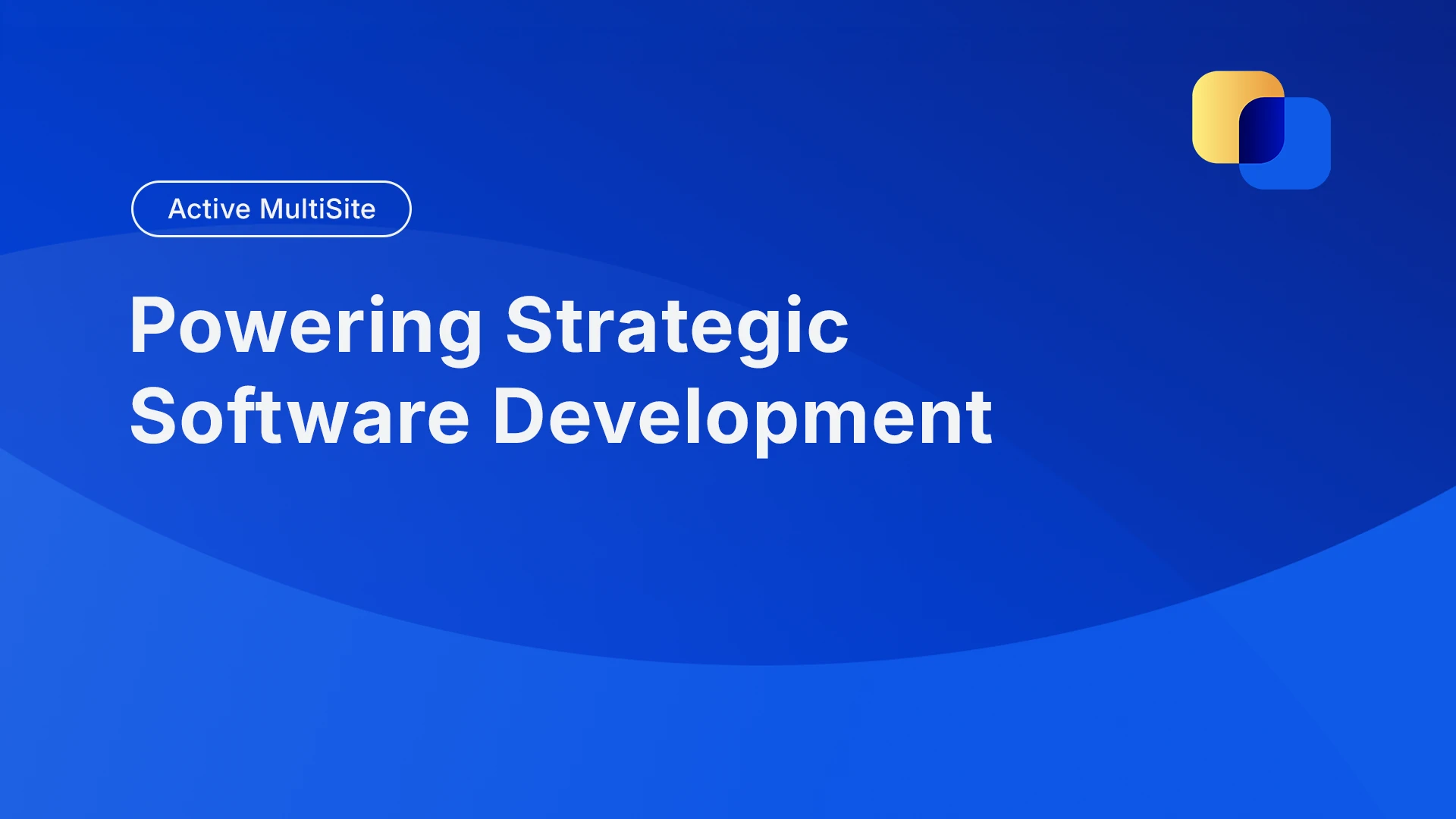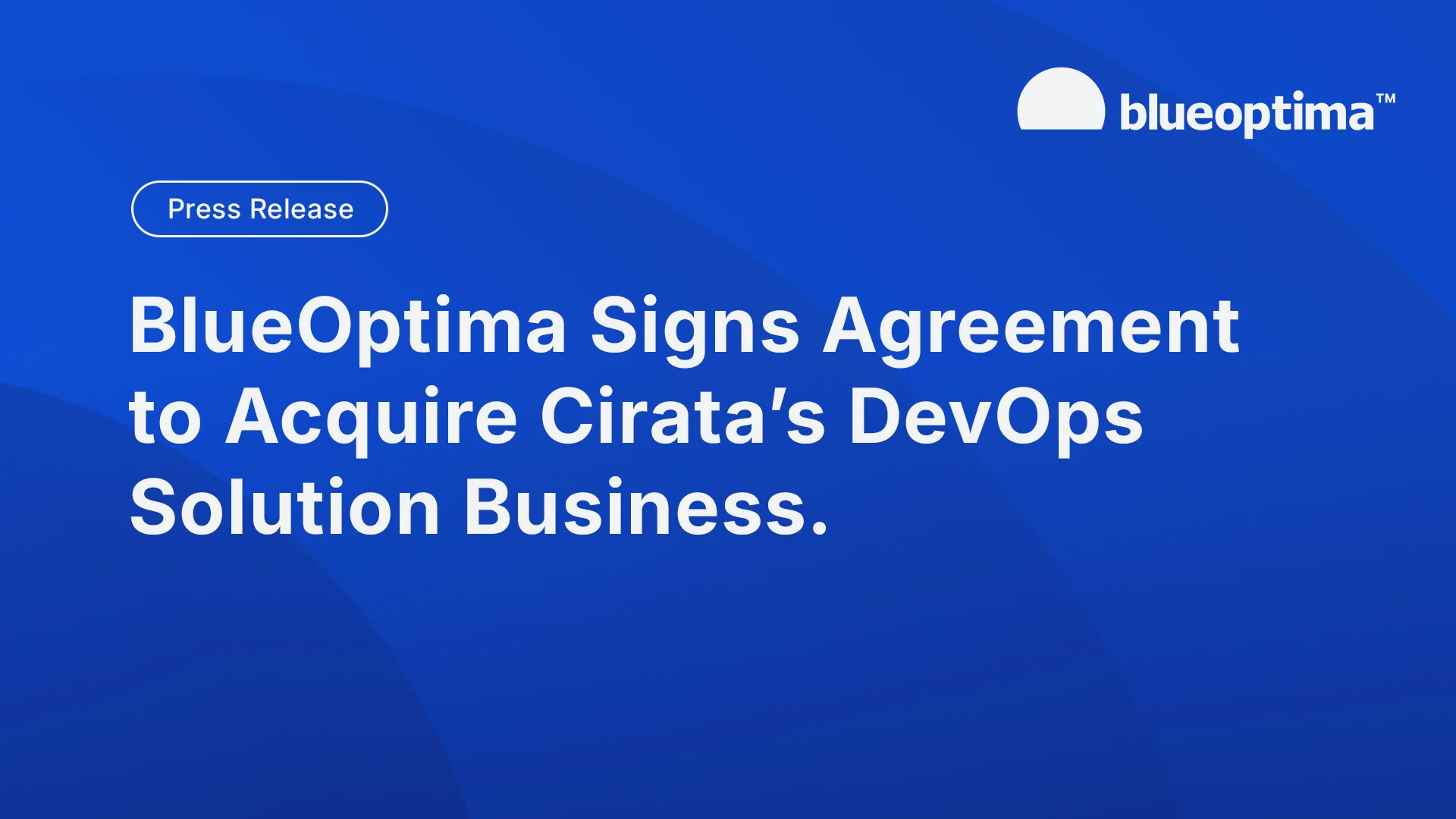GitHub’s AI Impact Plans Highlight Why Independent Measurement is Essential
GitHub’s new AI impact roadmap shows the industry is waking up to the need for effective AI measurement. But with multiple AI tools and platforms, leaders need independent, cross-ecosystem metrics for full visibility.


Picture this: You tell your CFO that Copilot saved you 30% of development time. They ask, ‘Compared to what?’. You don’t have an answer.
It’s the right question, and one that’s defining this new era of AI-assisted software development.
Every major platform, from GitHub to GitLab to Atlassian, is racing to prove AI’s business value. GitHub recently announced an AI metrics roadmap designed to move users from measuring adoption to quantifying value and taking action. Right now, they’re still stuck measuring usage but they plan to deliver greater visibility over Copilot’s impact in the future.
That’s good news for the industry, and confirmation that measurement has moved from optional to essential. But it also exposes a truth enterprises can’t afford to ignore: the vendors selling AI tools can’t be the ones measuring their success.
This post breaks down why.
Key takeaways:
- Measurement is essential: AI boosts short-term velocity, but it often increases rework. This means quality and maintainability must be part of every AI ROI discussion.
- Enterprises need comparisons: GitHub’s upcoming AI impact dashboards will measure value within its ecosystem, but tech leaders need visibility across all tools, repos, and AI assistants.
- Independence drives credibility: True AI performance measurement can’t come from the vendor selling the AI. It should be based on neutral, cross-platform benchmarks that reveal real outcomes.
- Proof over promise: As AI budgets rise and scrutiny intensifies, enterprises need measurable, comparable, and auditable AI impact data.
The Market Reality: Why AI Measurement isn’t Optional
AI has become embedded in everyday software workflows, yet the ability to quantify its impact is still uneven.
GitHub’s direction is right: usage metrics aren’t enough. But even as their dashboards evolve, they’ll always measure performance within their own ecosystem. That’s valuable, but incomplete.
Enterprise leaders need to understand:
- How AI affects productivity, quality, and maintainability across all repositories, not just GitHub.
- How different AI tools perform relative to each other.
- Where AI-generated code accelerates delivery, and where it introduces technical debt.
Those are enterprise-wide questions. GitHub’s data, by design, can’t answer them. It's not a criticism, it's structural reality.
The Maturity Curve: From Adoption → Impact → Independence
GitHub's shift toward impact metrics validates the market's evolution and confirms what we've been saying for some time: measurement matters. But the market is moving through distinct maturity stages.
| Stage | Vendor type | Measurement focus | Limitation |
|---|---|---|---|
| 1. Adoption | GitHub (today) | Usage, engagement, sentiment | Shows activity, not value |
| 2. Impact | GitHub (future) | Productivity metrics within its ecosystem | Single-ecosystem, vendor-specific |
| 3. Independence | BlueOptima (today) | Objective outcomes across ecosystems | Comparable, credible, auditable |
While vendors move from Stage 1 to Stage 2, enterprises already need Stage 3: independent, cross-platform measurement that works across all tools, languages, and LLMs.
That’s the AI Trust Layer we provide.
If independence is so important, why do we distribute through GitHub Marketplace? Fair question. Here's the distinction: we offer tools through GitHub Marketplace because that's where developers are.
But our measurement platform operates outside any vendor's data pipeline, analyzing code across GitHub, GitLab, Bitbucket, and on-prem using consistent, auditable metrics.
We meet developers where they work, while maintaining the cross-platform independence enterprises need.
What the Data Shows
Across hundreds of codebases and millions of code changes we’ve analyzed, we see a clearer picture of what ‘AI impact’ actually looks like:
- Quality and rework: AI-assisted commits show higher short-term velocity but 88% of devs had to rework GenAI code before committing it to production, showing that speed must be balanced with maintainability.
- Productivity and efficiency: In mixed human–AI workflows, efficiency gains vary widely depending on task type, language, and code maturity, reinforcing the need for objective baselines before declaring ROI
- Adoption patterns: Teams often see inconsistent AI adoption, with some embracing LLMs and others remaining cautious or reverting to manual coding. This creates uneven productivity profiles across organizations.
- Governance readiness: Very few organizations have clear visibility into AI code provenance. That signals an emerging compliance risk as AI-generated contributions scale.
These aren’t hypotheticals; they’re live patterns from our real-world data. And they demonstrate why AI performance can’t be meaningfully understood through usage metrics alone.
Why Now?
Three converging pressures add urgency to the need for AI impact measurement:
- AI budgets are scaling faster than measurement maturity.
Engineering leaders are being asked to justify multi-million-dollar AI investments with metrics designed for engagement, not outcomes. - Tool fragmentation is accelerating.
Most enterprises already use multiple AI assistants alongside hybrid cloud repositories. Comparing them requires neutral baselines. - Regulatory and financial scrutiny is rising.
Vendor ecosystems may not deliver the independent, cross-tool, enterprise-grade impact measurement that boards and auditors require.
It’s why an independent, cross-platform measurement layer isn’t a ‘nice-to-have’, it’s fast becoming a governance requirement for AI in engineering.
The Question Every Tech Leader Should Ask
Before approving another AI tooling budget, ask: ‘Am I basing my ROI on metrics from the company selling me the AI?’
If the answer is yes, you’re not seeing the full picture.
One healthcare service provider came to us with a similar question: How to measure the ROI on their Copilot rollout to 100 developers. With our Code Author Detection and Coding Effort metrics they could monitor the cohort’s performance, and prove a 5% increase in productivity over six months.
Thanks to our data they made strategic calls and gradually increased the number of licenses, spotting high-performing teams, and understanding where their investment was paying off and where it wasn’t delivering.
They quantified cost savings of $188K as a result.
Proof Matters as Much as Promise
If you’re relying solely on GitHub’s metrics to measure AI performance, you’re only getting half the story.
Explore how our cross-platform analytics can help you:
- See exactly where AI delivers ROI, and where it doesn't
- Compare AI tools objectively across your entire codebase
- Quantify the real impact on quality, velocity, and technical debt
- Build defensible AI governance with auditable, cross-platform data
If you’re investing in AI development, start with an independent baseline. Get in touch to discuss how we can measure your AI impact – independently, at scale, and right now.

















